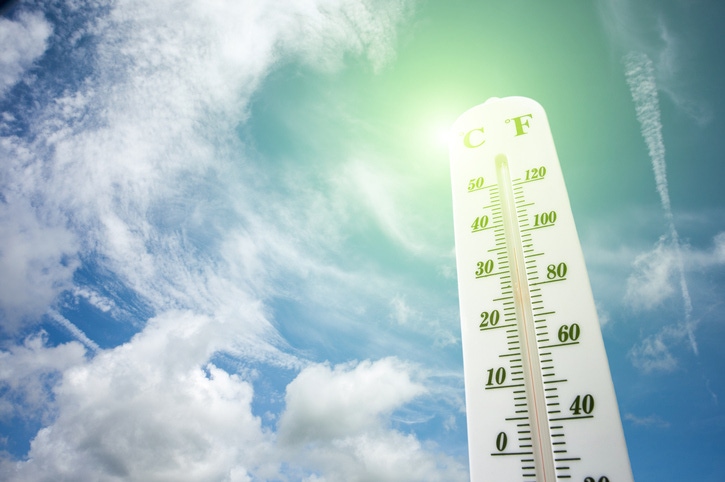
The video is disturbing if you’re not familiar with the cattle feeding business. Rows of dead, black-hided, fed cattle lined up in the harsh sun.
Nearly as disturbing is the commentary on social media surrounding the as-yet-unverified video, which made the rounds June 15, and has garnered several thousand views in a short time. A lot has been speculated.
Here’s what is known.
Video footage
Kansas Livestock Association Vice President of Communications Scarlett Hagins says KLA cannot confirm or deny the video that’s making the rounds. She says KLA does not know if it was shot in a feed yard in Kansas, or elsewhere, and the date of the footage.
They do however have confirmed reports from member feed yards of higher than normal death losses due to an extraordinary heat wave event in western Kansas over the weekend of June 10-12.
Extraordinary weather event
The weekend of June 10-12 saw daytime temperatures spike into the 100s across western Kansas, with little to no cooling temperatures in the evening. According to the Kansas State University Mesonet data, for the Garden City location, daytime temperatures for the weekend ranged from 90.2 to 103 degrees F, with nighttime temperatures from 60.7 to 75.9 degrees F.
High temperatures aren’t unusual for western Kansas Junes, however, in May the area also experienced unseasonably cool temperatures, some in the low 30s.
According to veterinarian Miles Theurer, Research Director for Veterinary Research and Consulting Services, based in Hays, Kan., market-ready cattle, with a high percentage of empty body fat, didn’t have ample time to acclimate from those low temperatures to the high temperature spikes.
“The weather event was the perfect storm, resulting in significant issues for the feedlot industry,” Theurer says.
In addition to the high heat, there was also higher than normal relative humidity in the area, with no wind speed, he said. The Mesonet shows winds averaged 5 mph over the course of the weekend, with relative humidity averaging 44.9% to 69.6%. The High Plains typically have more wind and lower humidity, allowing cattle to cool themselves better. There just wasn’t a time when the temperatures dropped enough to dissipate the heat and it accumulated adding to the stress, Theurer says.
Fat cattle acclimation
It’s important to know that these were market-ready cattle for the most part, and just about ready to head to the processor at well over 1,000 pounds, depending on the feed yard. At that stage, feed yards manage those cattle differently, especially in the summer months.
“We limit cattle to one heat-generating event a day to minimize those extremes,” Theurer says. For example, they won’t move cattle from pens twice in one day, or they will manage the feeding times so that digestion doesn’t generate additional heat at the wrong time of the day.
“Feed yards also were providing additional water tanks and bedding to mitigate some of that solar radiation (in the pens) to lower the heat for those cattle,” Theurer says.
It’s a little like if you were an overweight person and you jogged a 5K in 105 degree heat. You would drink more water to cool your body temperature, and you wouldn’t necessarily run another 5K that same day to let your body recover.
As for large shades that are used in some areas of eastern Kansas to cool cattle in feed yards, Theurer cautions that using those in western Kansas may actually wind up causing more trouble. This was an extraordinary event—typically there is more wind and lower humidity for cattle. Adding shades can actually cause crowding in a pen, generating more heat among those cattle, defeating the purpose.
Rows of dead
Comments on the viral video post point to the rows of dead cattle as suspicious. When, in actuality, it’s typical procedure for a feed yard when disposing of dead stock.
There has to be an accounting for every head that leaves the yard, whether on a truck to the processing plant or on the truck to the rendering plant. This is a business.
Theurer says typically feed yards will go through and remove dead cattle from pens and place them in areas where they can be accessed by the rendering truck. Cattle may be sent to rendering plants or to landfills if permitted, or to compost sites—all of which are properly documented and determined in advance of any need.
In a large event like this, veterinarians will have to do necropsies to determine likely cause of death, Theurer says, for insurance and indemnity program documentation. Animal IDs will be recorded for the accounting department.
How many lost
There’s been a lot of numbers thrown out around social media and in reports. Hagins says KLA doesn’t track those numbers and members do not self-report their death losses. However, KLA will say it was a significant number of cattle lost.
The weather event was a significant loss for the Kansas fed cattle industry. Hagins says fed cattle were selling for $1.38 per cwt last week, so on average a market-ready steer would probably be around a $2,000 animal.
About the Author(s)
You May Also Like






